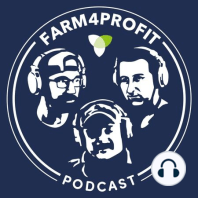6 min listen
Understanding the ROI of Cattle Buildings
ratings:
Length:
72 minutes
Released:
Apr 17, 2023
Format:
Podcast episode
Description
Cattle BarnsBill Rubis – Vice President at TenCorp, INC In 2010, they designed and built our first deep-pit cattle barn.Exploring the profitability of feeding cattle in confinement settings.As the cattle production industry has evolved over the years, there has been a significant shift to feeding cattle indoors.Just like no two cattle operations are the same, confinement buildings come in all shapes and sizes. Typically, they can be divided into a few broad categories. One major difference is the manure handling style: deep-pit In deep-pit buildings the cattle are on concrete slats (usually covered with rubber mats) and manure is stored underneath the building and pumped annuallybed-pack. With bed-pack buildings there is usually a concrete or earthen floor that is covered with bedding (most commonly shredded cornstalk bales). The other key feature is the roof shape. Cattle buildings usually have one of three roof types: Hoop (a curved roof usually covered by a canvas fabric)Mono-slope (where one eave is higher than the other)Gable (a traditional peaked roof). Mono-slope and gable roofed buildings can be made out of both wood and steel.Why should our listeners look into confinement feeding for cattle?WeatherFeed ConversionWhy better?Consistent feed intakeSpace or Sq FtMore valuable manureWhat are some draw backs from confinement feeding?Large capital investmentAnything else?Let’s now look more indepth to the types of barns you build the most of – the deep-pit barn. What are some benefits over others? The benefits of this type of deep-pit cattle barn include:Reduction in labor expenses: 0.14 hours vs. 0.38 hours in a bed-pack confinement (per head-space/year)Elimination of bedding expensesReduction of building size: stocking density of 22 sf (in a slatted barn), vs. 40 sf (in bed pack)Reduction in manure management expenses – only requires 1 pump/yearIs this true?Increased manure nutrient levelsWhy?Increased cattle comfortHowWhat are the features of TenCorp, Inc. Standard Barns:Gable Roof StructureWith properly designed ridge openings and sidewall height, the gable roof structure provides the ideal ventilation for cattle in every season. Fresh air is drawn in from both sides of the building, and is pulled through the open ridge due to the “stack effect”.Wood-Framed StructureThe wood-framed structure provides superior strength for the cattle barn. The roof system includes 1/2″ plywood and felt paper above the purlins. This eliminates condensation issues that are common with metal building systems.Pen ConfigurationsThe pen sizes are designed to ensure that the cattle are housed as efficiently as possible, while still maintaining adequate bunk space for access to feed.Why does pen size matter?How do we determine pen and barn size?How do we determine bunk space?How do we determine the amount of water access?Now cattle feeders don’t just need a good confinement to maximize their efficiency.We also need to be able to provide top quality feed to the cattle. Why is this important?Every cattle production site needs to be able to properly store commodities for use in their operation. TenCorp, Inc. provides storage solutions for every size of operation — from silage pads, to commodity sheds.Pads-A simple, yet effective solution allows producers to stockpile grain for future use.Bunkers allow more grain to be stored in a smaller area.TenCorp, Inc. works with our customers to determine:Storage capacity needsIdeal width, based on daily usageLength of bunker requiredBunker options included poured-in-place walls, or pre-cast panels.Commodity sheds provide storage capacity for the feed stock needed for mixing in the daily feed rations.Our commodity sheds are overbuilt, in order to withstand the day-to-day use required for feeding cattle.Shed features 8-foot concrete base walls, with 10-foot framed walls above. This provides ample head-height for loading equipment.The number of storage bays and sizes are modified in order to meet our c
Released:
Apr 17, 2023
Format:
Podcast episode
Titles in the series (100)
5 Tax Tips Every Farmer Should Know from Credit Karma: Tanner and David do a quick review of 5 tax tips for farmers to consider as provided by Credit Karma. by Farm4Profit Podcast
